
From Idea to Realisation
Interview with Lisa Berchtold
9 October 2024
With the exhibition “Dive into the Picture! Time Travel for Kids” the Deutsches Historisches Museum is showing an inclusively designed exhibition primarily for children of grade school age. It is based on the Picture of the Month “January – February – March”, which belongs to the famous seasonal cycle of the so-called “Augsburg Pictures of the Months” from the 16th century, one of the most important artworks in the DHM collections. Here the world of 500 years ago unfolds before us as if we were entering a 3-D walk-in backdrop. The people portrayed in the painting emerge into the exhibition room as historical figures who tell their stories and invite the young guests to explore and experience the world of the 16th century.
In our interview series we speak with the people and teams that have made this exhibition possible through their ideas and expertise. In this interview the head of the DHM exhibition workshops, Lisa Berchtold, speaks about how she and the team implemented the ideas of the curators and coordinated the setup of the exhibition to create its final form.
Which exhibition workshops were involved in the implementation?
In implementing an exhibition all of the DHM’s eight workshops are always involved. The ideas and concepts of the design first become a reality through the work of our team of craftsmen and artisans. In the DHM we have two carpenter workshops, a painter workshop, a metalworking shop, a decoration workshop, a book bindery, an electro department and a glass construction department.
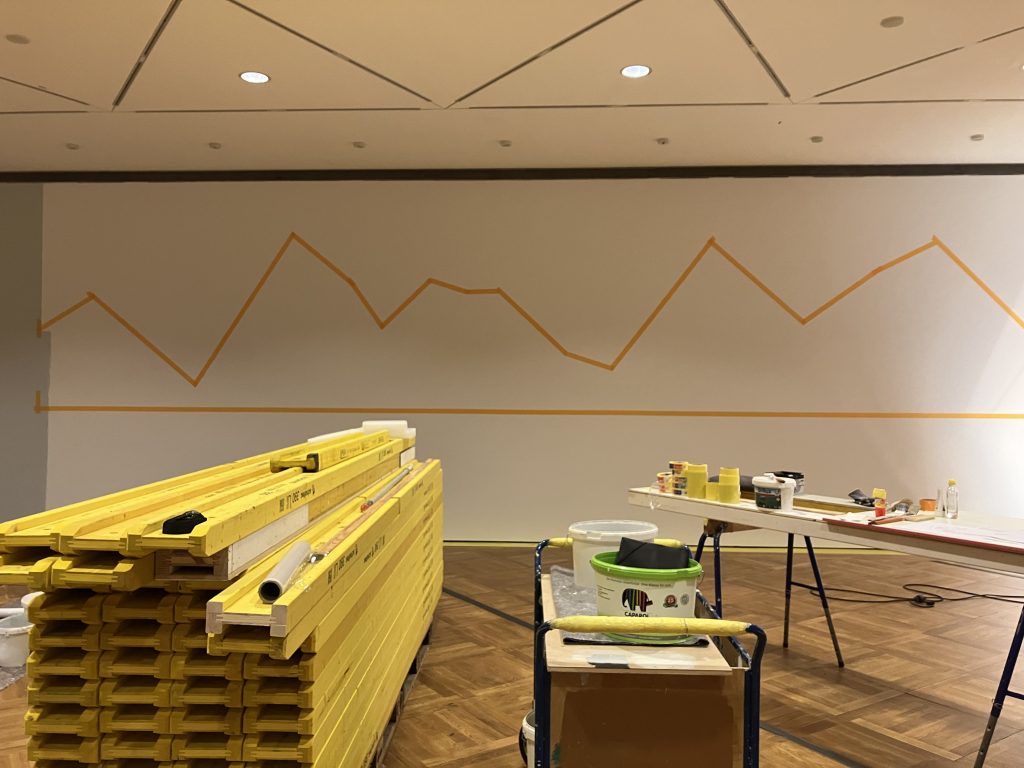
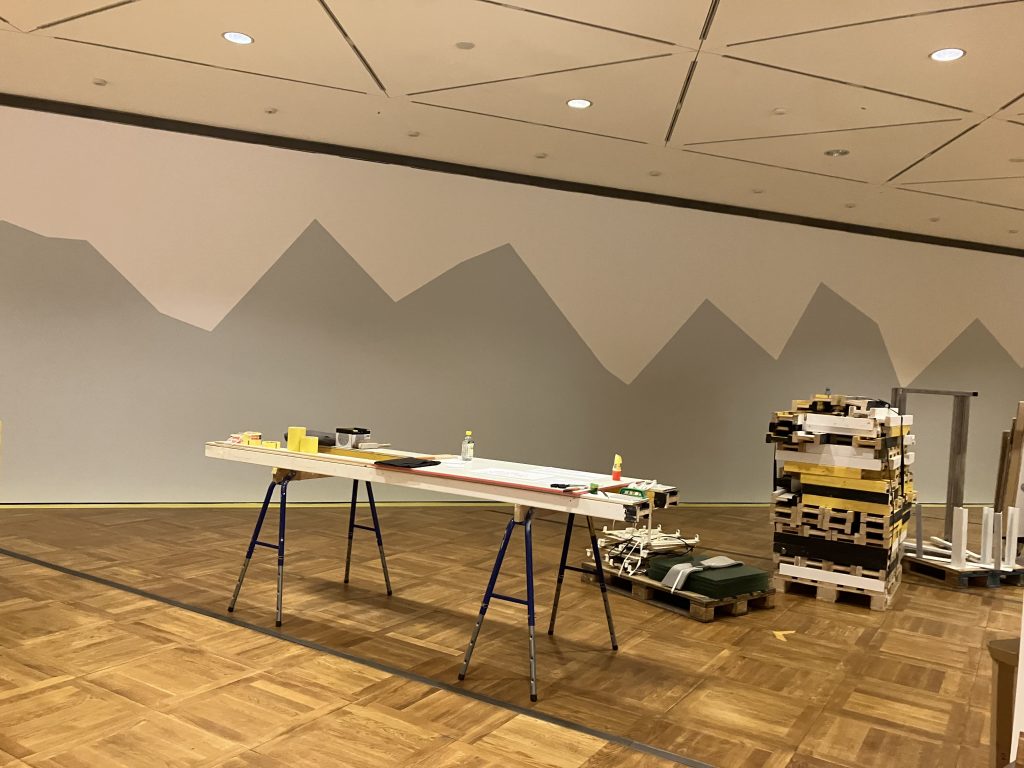
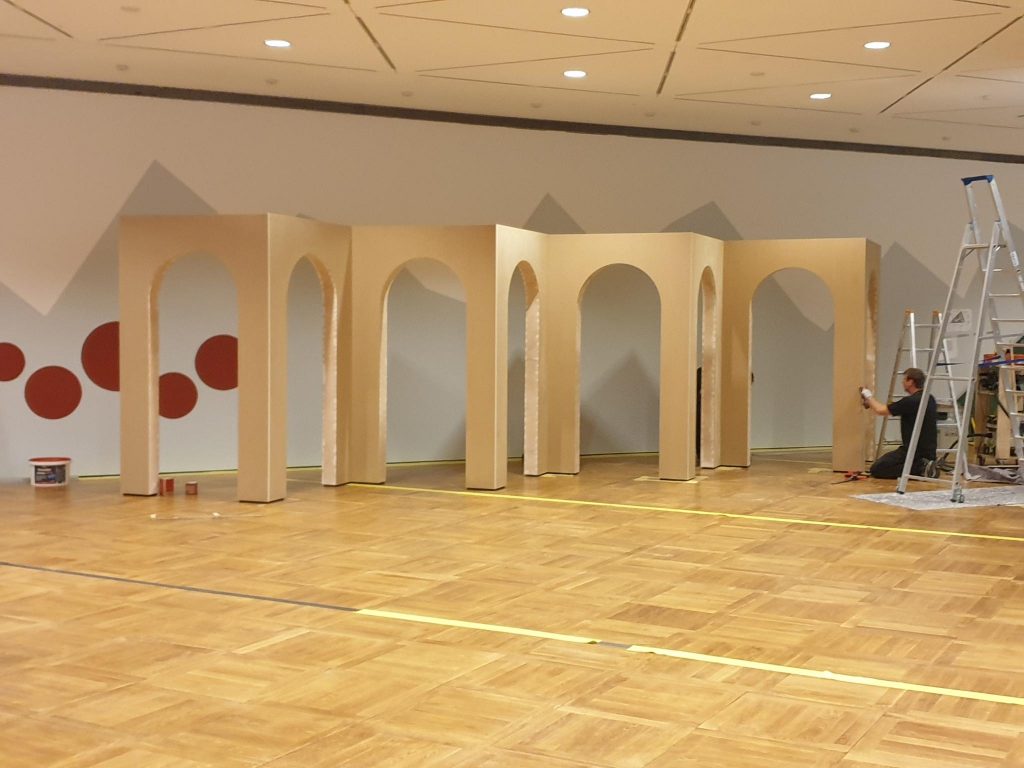
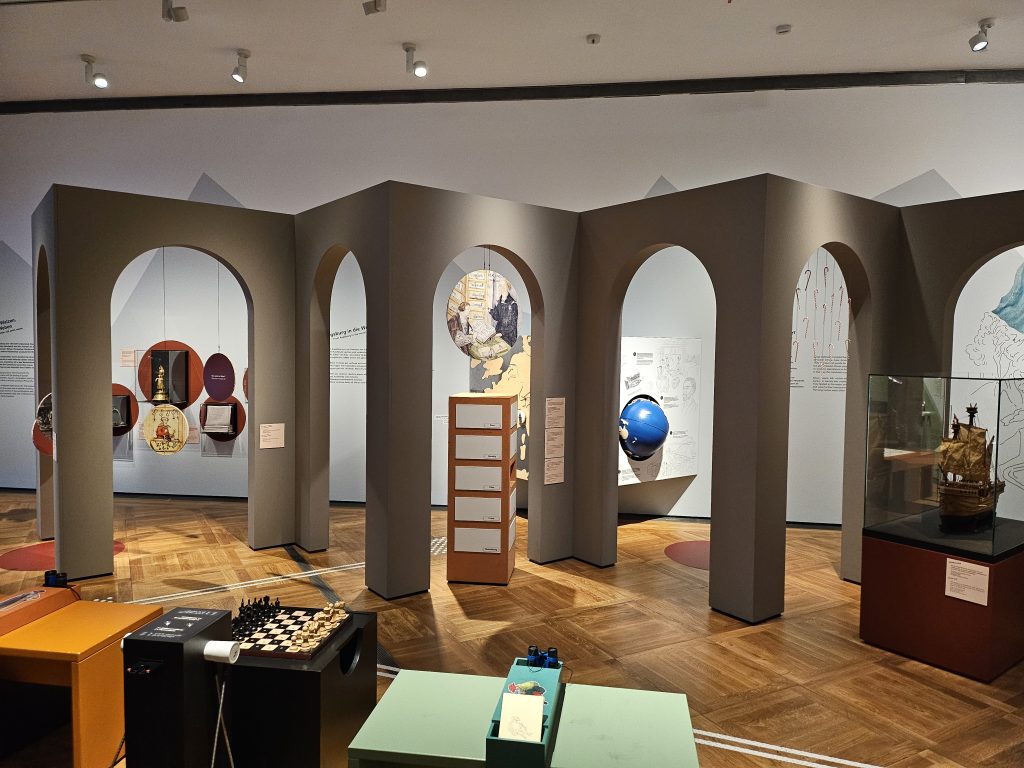
Almost all of the exhibition elements for the children’s exhibition were built here. These include the new picture frame for the main object, the Augsburg Picture of the Month, as well as the hands-on or activity stations, the media stations, showcases, and object holders, including the paper objects used by the visitors, so-called hands-on objects, object labels and containers for the pencils and crayons.
The main task of the electro department is to mount all of the lighting for the showcases and conductor rails as well as to adjust the lighting according to conservation requirements. A metal object can have stronger lighting than a paper object, for example. This always has to be considered when lighting the exhibition.
We also work with contractual partners and other suppliers because our team can’t produce everything, of course.
What was your job in setting up the exhibition?
I was right there when the exhibition was coming into shape to answer all kinds of questions and I also checked everything done by external contractors and generally pitched in to set things up.
I really enjoy the time when the exhibition room is gradually filling up and the exhibition is slowly taking shape.
My work begins long before it begins to be set up and consists primarily of coordinating the design plans with the different participants in the project. Above all I distribute the various work assignments to my team and to the external companies so that the plans can be realised.
In general I have to keep everything in mind, from deadlines to budget, from checking the plans and procuring the materials on down to finding the right locations for the fire extinguishers.
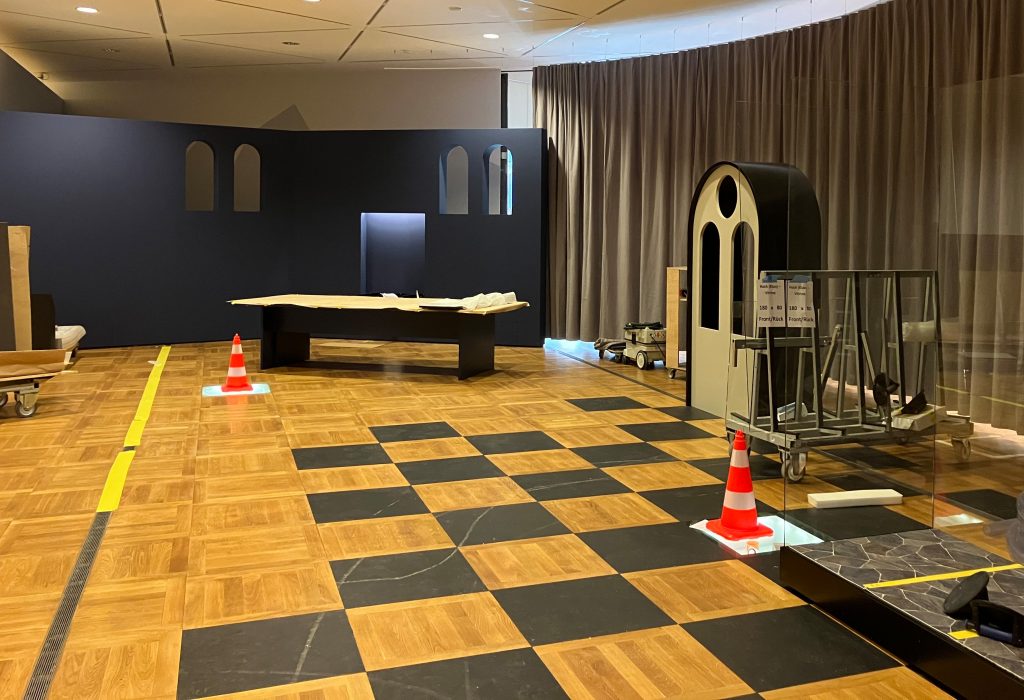
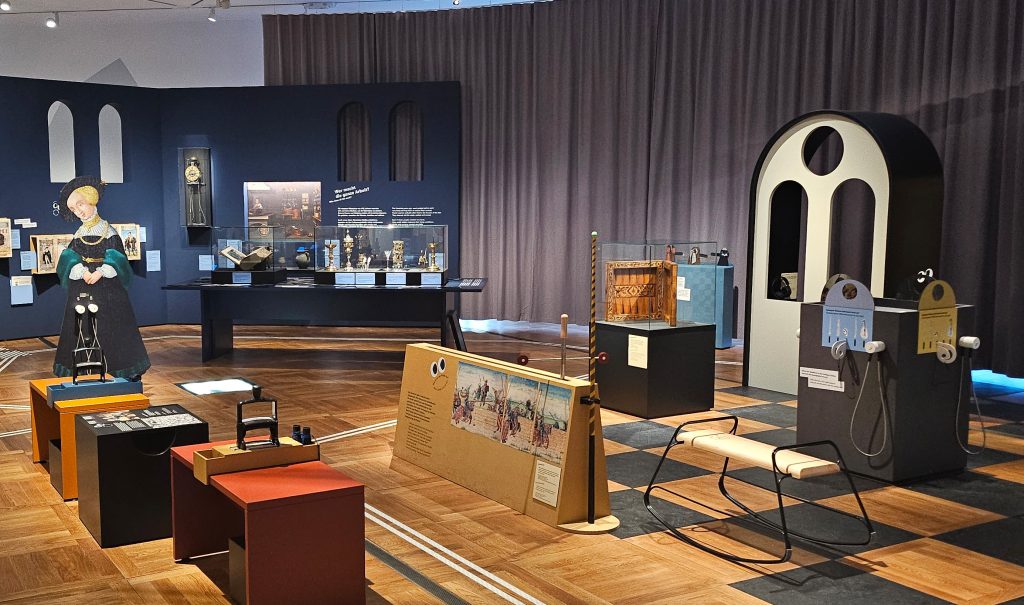
Was the children’s exhibition different from those for adults?
Yes. With “Dive into the Picture!” there were very many so-called hands-on or activity stations, which allow the young visitors to experience the history of the objects.
The hands-on stations take more time and effort to construct and to keep them in order. The educational team and the craftsmen have to check the exhibition every day for possible damage. At the beginning many repairs had to be made on the hands-on stations.
The lance station is a case in point. There the young visitors sit on a hobbyhorse and have to hit a moving target with the lance. According to the plan, a little rubber ball was to be fit over the tip of the lance so that nobody would be hurt. But the rubber ball kept falling off until we devised an alternative solution, which has kept it in place for the last three months.
In the meantime, after exchanging a few components, everything seems to be working and fewer repairs are necessary.
With exhibitions for children, large play elements are usually used because of safety concerns. But this isn’t always possible, so that signs have to be installed as a warning against swallowing small parts.
The exhibition elements are built at a lower height for the children and the showcases are similarly mounted on a lower level so that the target group “children between 8 and 12 years old” are better able to examine the objects.
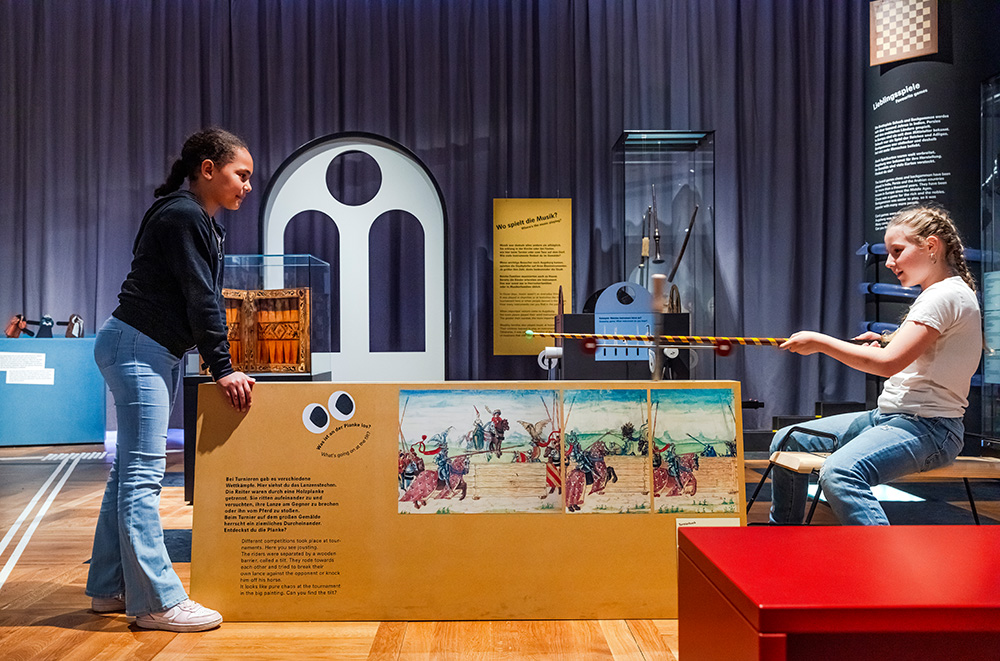
What materials were used in setting up the exhibition?
For the different elements and walls of the exhibition various wood-based materials with various surface treatments were used.
The showcases are made mostly of steel, glass, and also Forex Classic. The materials in the interiors of these cabinets have various requirements. They can only emit few or no harmful substances. The components of the showcases are used again in other exhibitions.
For the hands-on and object labels various cardboards and papers are used.
All wooden seating elements come from the depot and are always reworked for the next exhibition.
The molleton cloth curtain had been used in an earlier special exhibition and was reworked in our decoration workshop for this exhibition.
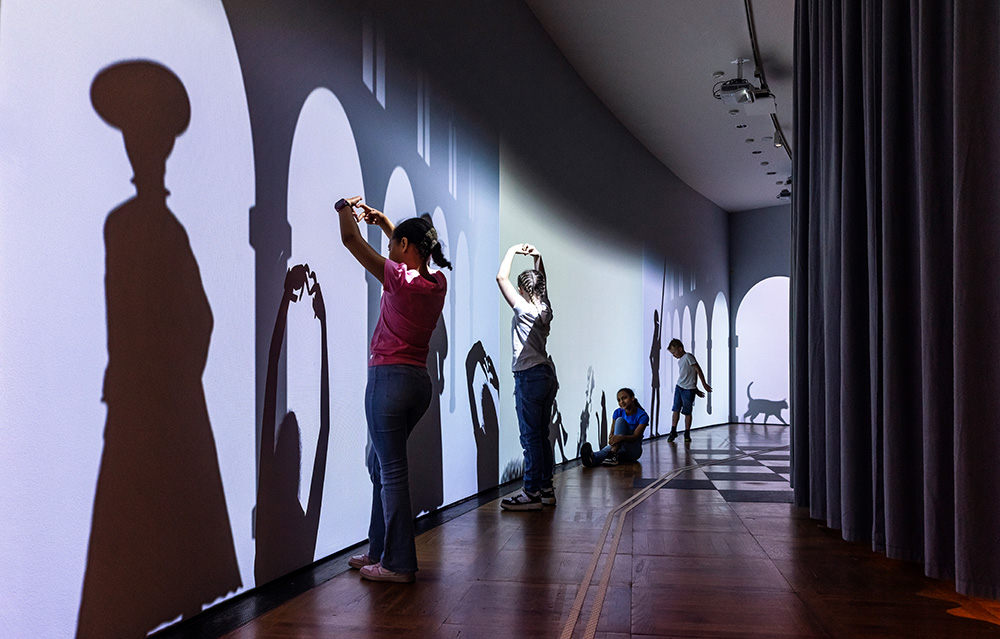
What presented a special challenge and what did you find particularly beautiful?
Due to the short term of the exhibition project there was unfortunately very little time to develop the hands-on or activity stations. This factor became apparent particularly in implementing these stations, because we had to build them from scratch, test them and sometimes make adjustments. But I am happy with the results and am very proud of my team.
The exhibition is much more colourful and lively than previous exhibitions at the DHM and offers more optical attractions, which I personally find very beautiful.
Above all, I think it’s terrific how enthusiastically the young visitors use the hands-on stations and this is entirely visible in the exhibition rooms. Many beautiful attractions can be found on the walls throughout the exhibition and in the visitor book.
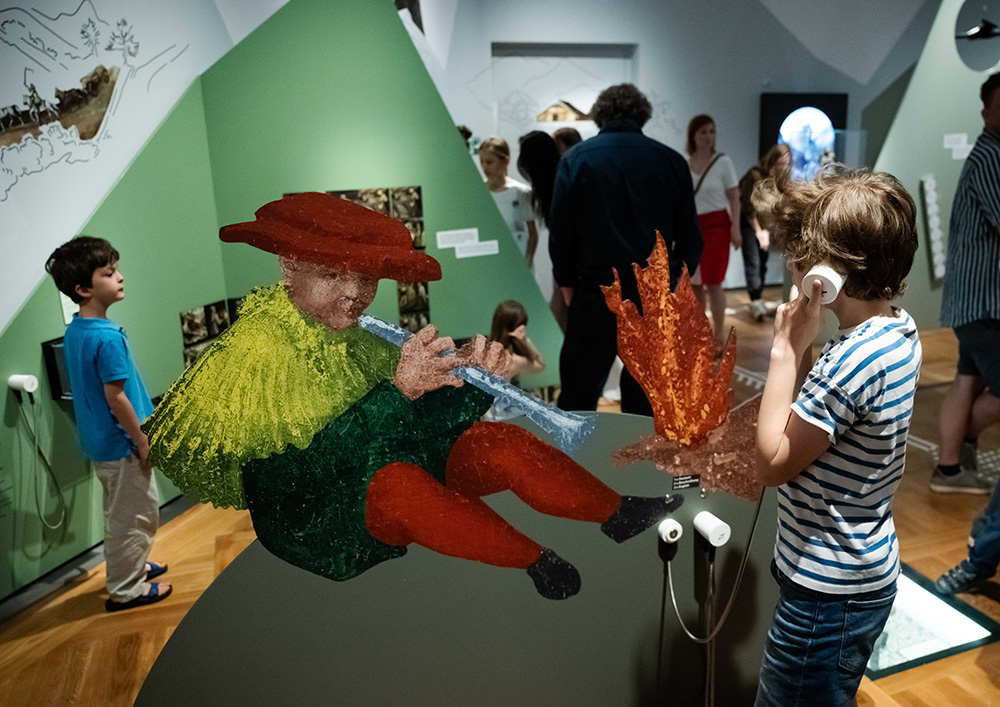
Lisa Berchtold
Lisa Berchtold has been head of the exhibition workshops since April 2023 and coordinates the presentation of exhibitions in the Deutsches Historisches Museum. |